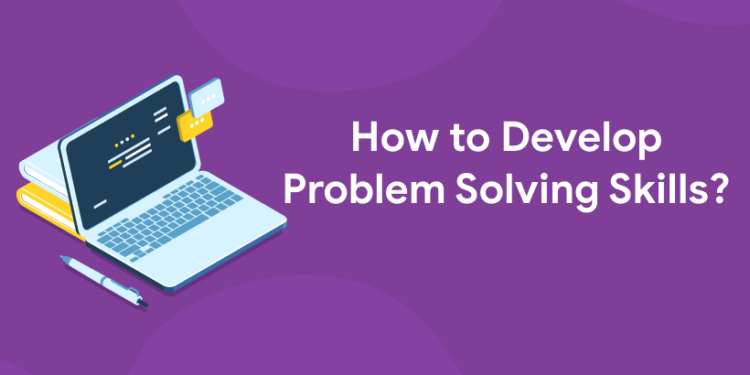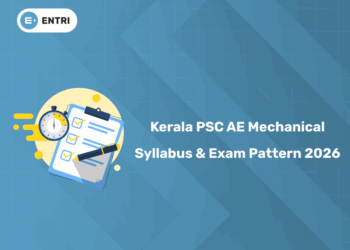Table of Contents
Learning problem-solving techniques is essential for all working professionals. Employers value the ability to find the root cause of a difficult problem and formulate viable solutions, regardless of your title or job description. Anyone can overcome complex problems by learning the soft skills and critical thinking techniques used by good problem solvers. Certain soft skills are universally valued by employers, regardless of your job or industry. One of them is problem-solving but problem-solving is not a skill that everyone is born with. Indeed, problem-solving is a difficult skill to master. As the world of work becomes more complex and fast-paced, the ability to identify and solve complex problems will become increasingly important. So, if you need to improve your problem-solving skills in order to meet the growing demand for problem solvers, we’ve provided some practical advice below.
Get the latest updates on python programming in the Entri app
Whether you’re dealing with a complex or relatively simple problem, it’s critical that you have a clear understanding of what you’re attempting to solve. When you try to solve multiple problems (even if they are relatively simple), the task becomes much more difficult. It’s even more important to have a shared understanding of the single problem you’re addressing if you’re working on a team. Once you’ve defined the problem, you’ll need to do some fact-finding and research to determine the nature of the problem and its potential causes. This research process may entail investigating the causes of similar problems that have been resolved in the past, or it may entail developing interview questions to ask those involved in the problem.
To know more about python programming in the Entri app
What Is Problem Solving?
Problem-solving entails determining the possible causes of a problem and devising a plan of action to address that problem. People use problem-solving skills in their personal and professional lives all the time. Following a step-by-step process and using a designated problem-solving framework are frequently required for effective problem-solving in the workplace. After researching the issue, it’s time to consider potential solutions. This stage necessitates creativity and brainstorming as you consider a few ideal solutions as well as some backup plans in case your first set fails. Typically, problem-solving entails devising some contingency plans to prevent further problems. Once you’ve compiled a list of potential solutions, narrow it down to the best one. When working as a group, try to make decisions together and reach a consensus solution. Implement your chosen solution methodically and deliberately. Avoid taking action too quickly, as this will often result in a sloppy solution that does not achieve the desired result. Examine how well your solution is working and decide whether further action is required. It’s best to set a time frame for observation before following up and deciding whether or not to change your plan.
Enroll in our latest python programming course in the Entri app
Steps of the Problem Solving Process
1: Which of the following data structures allows elements to be added and removed in a Last-In, First-Out (LIFO) order?
Identity and understanding the right problem
Many problems remain unsolved because there has not been a concerted effort to truly understand and identify the problem itself. Consider your time in school, for example. Did you get an immediate answer if you asked a teacher for help with a specific question you were having trouble answering? Most likely not. Instead, they’ve probably gone over the question with you and discussed what it’s really asking you to make sure you’re attempting to solve the right problem. You can use the same principle to improve your problem-solving abilities at work. In other words, good problem-solving necessitates first comprehending the true issue at hand before attempting to devise solutions. A solution is often more easily found once the correct intent of the problem is identified.
Get free placement assistance with Entri app
Research the systems and practices behind the problem
When confronted with a problem at work, request that relevant stakeholders walk you through the fundamentals of the relevant issues so that you understand how the situation or process currently operates. Don’t believe you know everything and must therefore provide an immediate solution. Consult with relevant people instead to truly understand the nuances of the problem area and its causes. After all, in order to effectively solve problems, you must first understand the key points of the process or situation. Consider a simple scenario, such as a bucket that fills up with water and then begins to overflow. Your first thought may be to purchase a larger bucket. However, this will only suppress the symptoms rather than identifying the underlying cause. In this example, a larger bucket will not solve the underlying real problem because it, too, will eventually overflow. Remember that problem-solving is not a quick fix.
Visualize the problem
While this may not be applicable in all situations, pictorial representations can aid in problem-solving. Draw a simple diagram of the process or situation you need to fix as part of your problem-solving process to help visualize all of the complexities. If a problem is becoming overwhelming or multifaceted, any tool, from PowerPoint to a whiteboard or a piece of paper, can help you understand it. Furthermore, drawing the current situation can help you think more clearly because it allows you to highlight and define the problem area, allowing you to tackle it more easily and quickly. It’s easy to become fixated on the circumstances that led to the problem. Shifting your attention away from the current problem and toward potential outcomes and solutions can provide you with a more positive outlook and open your eyes to new possibilities.
Get the latest updates on python programming in the Entri app
Brainstorm creative solutions
Building a simple solution does not imply trivializing or rushing through the problem at hand. Baseline your thoughts once you understand the problem and its fundamentals so you can recap and approach the problem with fresh eyes.
Then, generate potential solutions. Good problem solvers use critical thinking skills and recognize that there are no ‘right’ or ‘wrong’ answers at this point. The key to problem-solving is to focus on simple, creative solutions – but coming up with a creative answer has nothing to do with your creative ability. Rather, it is about your ability to consider a problem and potential solution from a different angle. So, when looking for solutions, don’t focus on how your company has traditionally approached the problem or how the problem came to be. Remember that problem-solving necessitates new ways of thinking and new solutions.
Enroll in our latest python programming course in the Entri app
Identify the best answer
Once you’ve compiled a list of potential solutions, go over it to narrow down your choices. If you have a long list, group ideas that are similar together. To help you decide, consider each solution in the context of your organization’s objectives, budget, and timeframe, as well as the likely overall success outcomes. Take into account any potential risks associated with these solutions. Presenting your final ideas to relevant team members and stakeholders and soliciting their feedback will also assist you in making the best decision possible. It’s difficult to solve a hazy problem that you never took the time to define. No workplace is perfect, and there are usually a number of interconnected problems that can be addressed at the same time. If you find yourself becoming overwhelmed and distracted during the problem-solving process, return to step one and ensure you are dealing with a single issue.
Get the latest updates on python programming in the Entri app
Keep an “Idea Journal” with You
When you keep an “Idea Journal” with you at all times, you’ll be able to quickly record important thoughts, write down personal experiences, make sketches, and explore ideas. Working out problems on paper and then viewing them objectively is easier than having all your thoughts stuck in your head (and will provide better problem-solving strategies). If you’re working on a team, it’s critical that you agree on basic ground rules and procedures before you begin the problem-solving process. This will speed up the process and help you avoid future conflicts. The best problem solvers are also excellent listeners. Problem-solving necessitates taking in and carefully analysing a variety of inputs and opinions. It is critical that everyone involved in the process feels heard.
Use Mind Maps to Help Visualize the Problem
Mind Maps, which provide a visual representation of a problem and its potential solutions, can help focus the mind, stimulate the brain, increase the capacity for creative thinking, and generate more solution ideas. Create a Mind Map with your problem as the central concept. Include “main branches” that include all of the causes of the problem. Use “sub-branches” to delve deeper into the subject. Create a separate Mind Map with all potential solutions to the central problem. Add “main branches” that show all of the possible solutions to your problem, such as colleagues who can assist, techniques you can use, and other resources you can use. Add “sub-branches” to delve deeper into the details. Create a final branch with the best solution to the main problem.
Get the latest updates on python programming in the Entri app
Create “Psychological Distance”
What exactly is the psychological distance? It is “anything that we do not experience as occurring now, here, and to ourselves,” according to the construal level theory (CLT). Taking another person’s perspective or viewing the problem as unlikely are two examples. Scientists have discovered that increasing the mental distance between us and our problem increases the number of creative solutions. Thinking more abstractly allows us to make unexpected connections between seemingly unrelated concepts, allowing our minds to increase their problem-solving capacity.
To arrive at new approaches to long-standing problems, effective problem solving necessitates the ability to brainstorm solutions and think outside the box. Working collaboratively and supportively with other team members is required when addressing a group problem or systemic social problem. To diagnose the root cause of a problem and find the best solution, you must be analytical and follow a logical and methodical process. If you are dealing with an interpersonal conflict or making changes that are likely to affect people emotionally, you must have high emotional intelligence (or EQ). Problem-solving and decision-making are inextricably linked. It is critical that you have enough conviction and trust in yourself to make a decision and stick to it.
Enroll in our latest python programming course in the Entri app
Explore Free Coding Courses!
Take your first step toward mastering in-demand skills, acing interviews, and securing top-tier jobs with Entri's free coding courses.
👉 Explore Free Courses NowConclusion
The work does not stop once a solution to a problem has been identified. As a problem solver, you must develop and implement an action plan, monitor progress, and make any necessary adjustments to ensure the problem is completely resolved. Problem-solving skills, like any other skill, require to practice. It takes time to become a problem solver. However, with no shortage of problems to face, these tips will help you develop your problem-solving skills so that you can address any problem that arises, whether in the workplace or in life, with the best solution possible. Furthermore, you will become known as a problem solver, which will have long-term career benefits. If you are interested to learn problem-solving skills, the Entri app will help you to acquire them very easily. Entri app is following a structural study plan so that the students can learn very easily. If you don’t have a background, it won’t be a problem. You can download the Entri app from the google play store and enroll in your favorite course.
Get the latest updates on python programming in the Entri app












